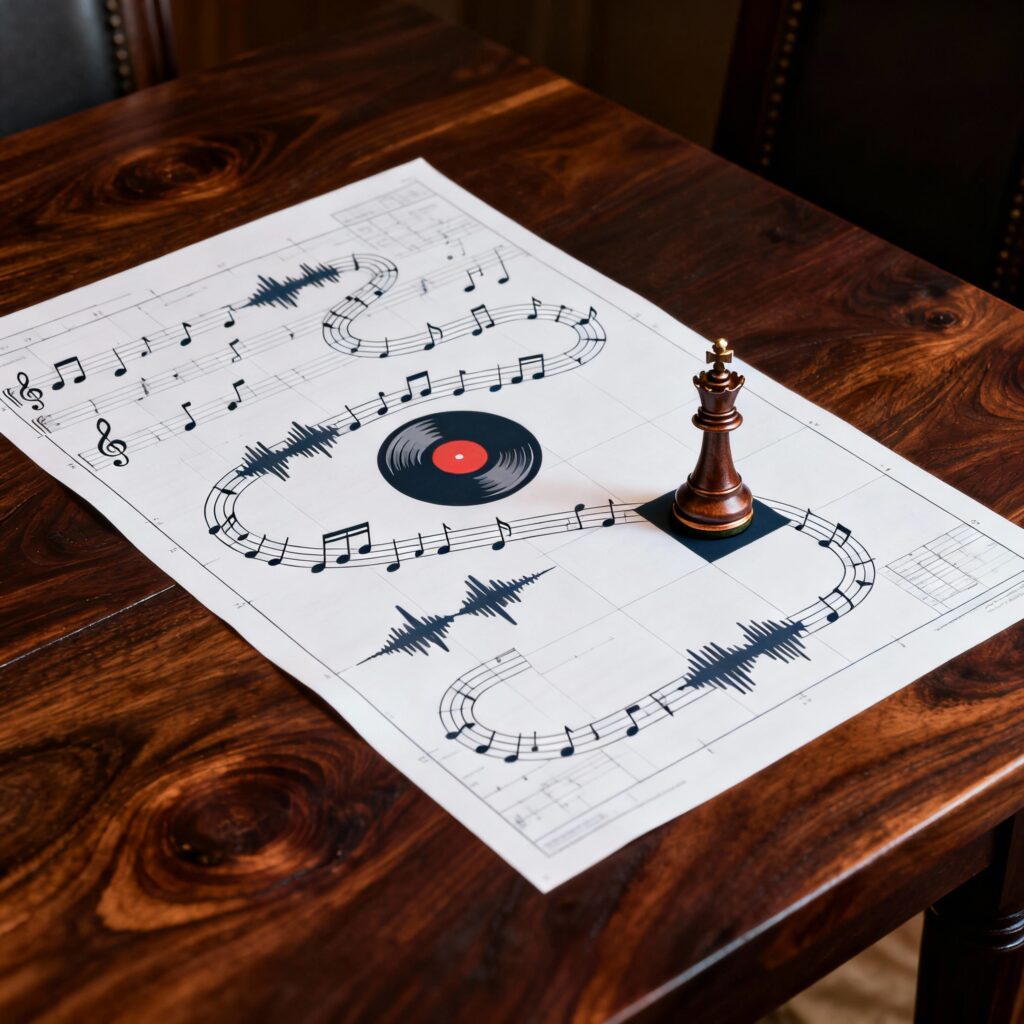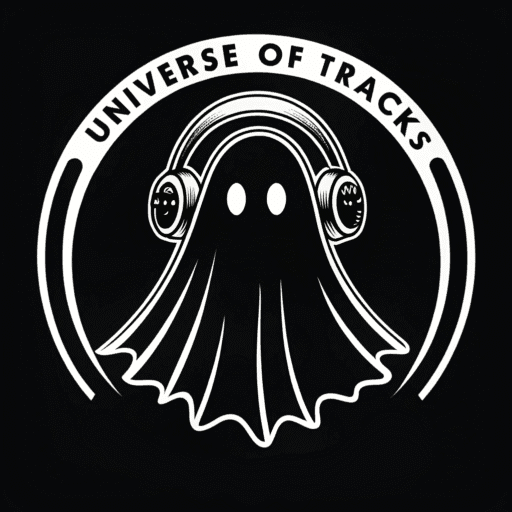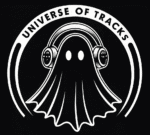The Label Blueprint: The Strategic Map to Go From Unknown Producer to Signed Artist
To get signed to a record label, you need a strategic system, not just good music. The path from an unknown producer to a signed artist isn’t about spamming demos; it’s about becoming an undeniable choice. This ultimate 3-step blueprint is a map designed to forge your unique sonic identity, build an unbreakable portfolio, and execute a surgical submission to finally get a record deal.
So, you’ve spent countless hours in the studio. Your tracks sound good, your skills are sharp, but the doors to the industry’s gatekeepers—the A&Rs, the label managers—seem firmly shut. You send out demo after demo, only to be met with silence. It’s a frustrating cycle that burns out even the most talented producers.
The problem isn’t your music; it’s your method. The old way to get signed to a record label is dead. In today’s saturated market, talent isn’t enough. You need a strategy.
This is not another list of generic “tips.” This is the Sonic Architect’s Blueprint—a systematic approach to transform you from just another producer into a strategic partner a label wants to invest in. Let’s build your empire. It is the definitive strategy to get signed to a record label.
In This Blueprint You’ll Learn:
- Phase 1: Forge Your Sonic DNA
- Step 2: Build the Unbreakable Portfolio
- Step 3: The Surgical Submission
- What a Record Deal Actually Means
Phase 1: Forge Your Sonic DNA to Get Signed to a Record Label
Before you even think about a demo, you must answer one question: “What do I sound like?” If the answer is “a bit like artist X” or “melodic techno,” you’ve already lost. Labels aren’t looking for copies; they are looking for the original. They want a Sonic DNA—a sound so unique and recognizable that it can be identified in seconds.
Your Sonic DNA is your most valuable asset. It’s the combination of your sound selection, your rhythmic patterns, your mixing philosophy, and your melodic choices. It’s what makes you, you. Don’t chase trends; build a sound that can start them.
How to Forge Your DNA:
- The 3-Track Rule: Produce three tracks that sound like they belong together. They should feel like part of the same sonic universe, even if they explore different moods. This demonstrates consistency and vision.
- Identify Your “Power Tools”: What are the 1-2 synths, plugins, or samples that define your core sound? Master them. Build your identity around a core set of tools to ensure a cohesive sonic palette.
- Get Brutally Honest Feedback: Play your three tracks for trusted mentors and ask them: “What is the one word you would use to describe this sound?” If you get consistent answers, you’re on the right track.
Building a unique Sonic DNA from scratch is the most challenging part of the process. It requires deep introspection and technical mastery. If you need to accelerate this phase and work with a team that specializes in crafting unique sonic identities, our sonic architects can build your custom sound for you.

Phase 2: Build the Unbreakable Portfolio
Now that you have your Sonic DNA, you need to package it. A powerful portfolio is essential if you want to get signed to a record label. An A&R doesn’t have time to listen to your entire life’s work. You need to present them with a portfolio that is concise, professional, and undeniably impressive. Think of it as your sonic business plan.
Your portfolio is not a random collection of your “best” tracks. It’s a curated presentation of your artistic vision. As explained in a detailed music industry analysis by Sound on Sound magazine, labels look for artists who demonstrate a clear brand and direction.
How to Build Your Portfolio:
- The “A-B-C” Structure:
- Track A (The Spearhead): Your most powerful, attention-grabbing track. This is the one that defines your Sonic DNA in its purest form.
- Track B (The Depth): A track that shows your range. It could be more melodic, more experimental, or aimed at a different energy level, but it must still feel like you.
- Track C (The Vision): A track that hints at the future. It shows the A&R not just what you are, but what you could become.
- Presentation is Everything: Upload your tracks as a private SoundCloud playlist. Number them clearly (e.g., 1. Artist Name – Track Title). Ensure all metadata is filled out correctly. This shows professionalism and respect for the listener’s time.
Building a full, label-ready portfolio takes time. If you have the vision but need the high-quality assets to fill it out quickly, our library of release-ready ghost productions provides the elite-level tracks you need to complete your sonic statement.
Phase 3: The Surgical Submission to Get Signed to a Record Label
What is a Sonic DNA and Why Do You Need It to Get Signed?
This is where most producers fail in their attempt to get signed to a record label. They blast their demos to every email address they can find. This is spam, not a strategy. An Architect is precise. Your submission must be a surgical strike, aimed at the right person, at the right time, with the right message.
The goal isn’t to beg for a listen; it’s to start a conversation and present a partnership opportunity.

How to Execute the Submission:
- Target Selection: Research labels that align with your Sonic DNA. Don’t just look at the biggest names. Find the imprints where your sound would genuinely fit. Identify the specific A&R or label manager. LinkedIn and social media are your tools for this reconnaissance.
- The “Warm” Email: Your email should be short, professional, and personalized.
- Subject:
Music Submission: [Your Artist Name] x [Label Name] - Body: Briefly mention why you chose their label specifically (e.g., “I’ve been following your releases, and the sound of [Artist X] resonates with my own sonic direction.”). Introduce yourself and your vision in one sentence. Then, provide the private SoundCloud link. That’s it.
- Subject:
- The Final Quality Gate: Before you hit send, ensure your tracks are professionally polished. A great idea with an amateur mix is an instant rejection. The sonic quality must be undeniable. As highlighted by countless industry experts, including those interviewed for Attack Magazine, the mix and master can make or break your first impression.
Your music is your product, and its final polish is non-negotiable. To ensure your tracks meet the exacting standards of the world’s top labels, our professional Mix and Mastering services are the final quality gate your portfolio needs to become truly undeniable.
What a Record Deal Actually Means
Getting signed is the goal, but it’s crucial to understand what you’re signing up for. A record deal is a complex legal agreement, but it generally revolves around two key concepts: the master recordings and publishing. The label will typically own the master recordings of the tracks you deliver, while the publishing (the rights to the underlying composition and lyrics) can be structured in various ways. Your income will come from royalties—a percentage of the revenue generated from sales and streams—and potentially a small advance upfront. Understanding these basics, as detailed by legal experts in the music industry, is a critical part of your strategic journey as an artist.
Your Blueprint to an Empire
Stop acting like a lottery player and start acting like an architect.
Forge your DNA. Build your portfolio. Execute with precision. This is the blueprint. It requires dedication and strategic thinking, but it’s a system designed for results, not hope. The tools are in your hands, the map is in front of you.
Now, use this blueprint to get signed and build your empire.

